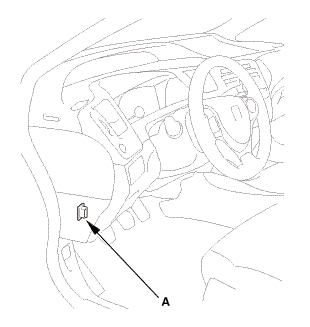Honda Civic Service Manual: Manual Transmission Removal and Installation (K24Z7)
2131K5

| 1. | Steering Joint Cover |
|
|
|
| 2. | Steering Column Lower Slide Shaft - Hold |
|
|
|
| 3. | Steering Joint Bolt - Loosen |
|
|
|
| 4. | Steering Wheel Hold |
|
|
|
| 5. | Steering Joint - Disconnection |
|
|
|
||||||||||||||||||||
| 6. | Wide - Hood Open Position |
|
|
|
| 7. | Front Grille Cover |
|
|
|
|
|
|
| 8. | Wiper Arm Assembly |
|
|
|
| 9. | Both Side Cowl Covers |
|
|
|
| 10. | Center Cowl Cover |
|
|
|
| 11. | Under Cowl Panel |
|
|
|
| 12. | Battery Terminal - Disconnection |
|
|
|
|||||||||||||||||||||||||||
| 13. | Air Cleaner Assembly |
|
|
|
| 14. | Intake Air Duct |
|
|
|
| 15. | ECM Assembly |
|
|
|
|
|
|
|||||||||
| 16. | Clutch Slave Cylinder |
|
|
|
|||||||||||||||||||||||
| 17. | Shift Cable Bracket |
|
|
|
| 18. | Transmission Peripheral Assembly Upper Side |
|
|
|
|
|
|
|
|
|
| 19. | Engine Support Hanger |
|
|
|
|
|
|
||||||||||||
| 20. | Upper Transmission Housing Mounting Bolt |
|
|
|
| 21. | Transmission Mount Assembly |
|
|
|
| 22. | Vehicle Lift |
|
| 23. | Splash Shield |
|
1. |
Remove the splash shield (A). |

| 24. | MTF Replacement (M/T) |
|
|
|
| 25. | Front Wheel |
|
|
|
| 26. | Front Stabilizer Ball Joint, Both Damper Side - Disconnection |
|
|
|
| 27. | Ball Joint - Removal |
|
|
Always use a ball joint remover to disconnect a ball joint. Do not strike the housing or any other part of the ball joint connection to disconnect it.
|
||||||
|
|
|
|
|
|
||||||||||||||||||||||||||||||||
| 28. | Tie-Rod End Ball Joint - Disconnection, Both Side |
|
|
|
||||||||||||
| 29. | Lower Arm Joint - Disconnection, Both Knuckle Side |
|
|
|
| 30. | Driveshaft Front Both Inboard Side |
|
|
|
|||||||||||||||||||||
|
|
|
||||||||||
| 31. | Intermediate Shaft Assembly |
|
|
|
|
|
|
|
|
|
||||||
| 32. | Subframe Support |
|
|
|
| 33. | Lower Torque Rod - Disconnection |
|
|
|
| 34. | Front Subframe Assembly |
|
|
|
|
|
|
|
|
|
| 35. | Transmission Jack Support |
|
| 36. | Manual Transmission Assembly |
|
|
|
|
Front side
Rear side
|
|
| 37. | Release Fork |
|
|
|
|
|
|
||||||

| 1. | Release Fork |
|
|
|
||||||||||||
|
|
|
|
|
|
||||||
| 2. | Manual Transmission Assembly |
|
|
|
|
Front side
Rear side
|
|
|
|
|
| 3. | Subframe Support |
|
|
|
| 4. | Front Subframe Assembly |
|
1. |
Loosely install the new front subframe mounting bolts (A). |
 o7oagsjaaosn-m77lm41!
o7oagsjaaosn-m77lm41!
|
2. |
Insert the subframe alignment pin (B) through the positioning hole (C) on the right front subframe, and into the positioning hole (D) on the body, then loosely tighten the subframe right front mounting bolt. |
|
3. |
Insert the subframe alignment pin through the positioning slot on the left front subframe, and into the positioning hole on the body, then loosely tighten the subframe left front mounting bolt. |
|
4. |
Tighten the subframe mounting bolts to the specified torque values starting with the right front subframe mounting bolt. Use the subframe alignment pin when tightening the front side subframe mounting bolts. |
|
5. |
Check all of the subframe mounting bolts, and retighten if necessary. |
|
|
NOTE: Tighten the bolts in the sequence shown. |
||
|
6. |
Remove the transmission jack and the subframe adapter. |
|
|
|
|
|
|
| 5. | Lower Torque Rod - Reconnection |
|
|
|
| 6. | Intermediate Shaft Assembly |
|
|
|
|||||||||||||||
|
|
|
|
|
|
| 7. | Driveshaft Front Both Inboard Side |
|
|
|
|||||||||||||||||||
|
|
|
| 8. | Lower Arm Joint - Reconnection, Both Knuckle Side |
|
|
|
| 9. | Tie-Rod End Ball Joint - Connection, Both Side |
|
|
|
|||||||||||||||
| 10. | Front Stabilizer Ball Joint, Both Damper Side - Reconnection |
|
|
|
| 11. | Front Wheel |
|
|
|
||||||
| 12. | MTF Replacement (M/T) |
|
|
|
||||||||||||||||||||||||||
| 13. | Splash Shield |
|
1. |
Install the splash shield (A). |

| 14. | Lower The Vehicle On The Lift |
|
| 15. | Steering Joint - Reconnection |
|
|
|
||||||||||||||||||||
|
|
|
| 16. | Steering Wheel Release |
|
|
|
| 17. | Steering Joint Bolt - Tighten |
|
|
|
| 18. | Steering Column Lower Slide Shaft - Release |
|
|
|
| 19. | Steering Joint Cover |
|
|
|
| 20. | Transmission Mount Assembly |
|
|
|
| 21. | Upper Transmission Housing Mounting Bolt |
|
|
|
| 22. | Engine Support Hanger |
|
|
|
| 23. | Transmission Peripheral Assembly Upper Side |
|
|
|
|
|
|
|
|
|
| 24. | Shift Cable Bracket |
|
|
|
|||||||||||||||
| 25. | Clutch Slave Cylinder |
|
|
|
||||||||||||
| 26. | ECM Assembly |
|
|
|
|||||||||
|
|
|
| 27. | Intake Air Duct |
|
|
|
| 28. | Air Cleaner Assembly |
|
|
|
| 29. | Battery Terminal - Reconnection |
|
|
|
|||||||||||||||||||
| 30. | Under Cowl Panel |
|
|
|
| 31. | Center Cowl Cover |
|
|
|
| 32. | Both Side Cowl Covers |
|
|
|
| 33. | Wiper Arm Assembly |
|
|
|
| 34. | Front Grille Cover |
|
|
|
|
|
|
| 35. | Manual Transmission After Install - Check |
|
| 36. | Pre-Alignment Checks |
|
| 37. | Caster - Inspection |
|
|||||||||||||||||||||||||||||||||||||||||||||||
| 38. | Camber - Inspection |
|
||||||||||||||||||||||||||||||||||||||||||||||||||||||||||||||||||||||||||||||||||||||
| 39. | Front Toe - Inspection |
|
|||||||||||||||||||||||||
| 40. | Turning Angle - Inspection |
|
|
|
|||||||||||||||||||||||||||||||||||||||||||||||||||||||||||||||||||||||||||||||||||||||||
|
|
|
|||||||||||||||||||||||||||||||||||||||||||||||||||||||||
| 41. | HDS DLC - Connection |
|
|
|
| 42. | VSA Sensor Neutral Position - Memorization |
|
||||||||||
| 43. | Steering Angle Sensor Neutral Position - Clear |
|
|||||||
| 44. | Maintenance Minder Reset |
|
 Manual Transmission End Crankshaft Oil Seal Replacement - In Car (R18Z1 M/T)
Manual Transmission End Crankshaft Oil Seal Replacement - In Car (R18Z1 M/T)
111145 TRANSMISSION SIDE
Removal
1.
Pressure Plate
1.
Install the ring gear holder.
...
 Manual Transmission Removal and Installation (R18Z1 M/T)
Manual Transmission Removal and Installation (R18Z1 M/T)
213101
1.
Steering Joint Cover
1.
Remove the steering joint cover (A).
2. ...
See also:
Honda Civic Owners Manual. If the Brake System Indicator (Red) Comes
On or Blinks at the Same Time When the
Brake System Indicator (Amber) Comes
On
If the brake system indicator (red) comes on or blinks at the
same time when the brake system indicator (amber) comes on,
release the parking brake manually or automatically.
If the brake system indicator (red) continuously comes on or blinks at
the same time when the brake system indica ...










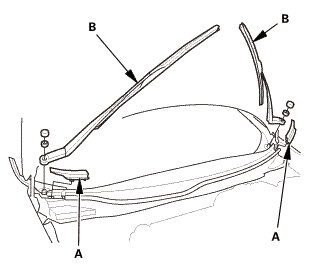
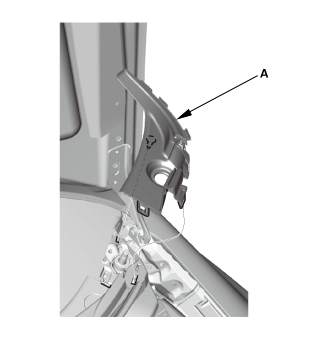
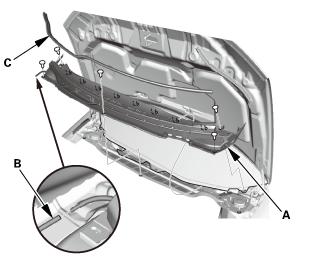

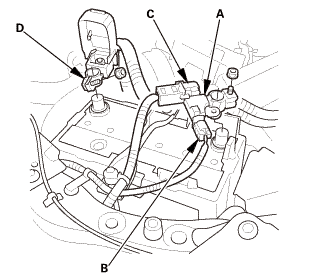









 o7aaksnaai2o
o7aaksnaai2o







 ov
ov wmae-sldaidz
wmae-sldaidz n7aaf-sdaainnmm
n7aaf-sdaainnmm

















 (pin(o(pmne7si-snnzloror)
(pin(o(pmne7si-snnzloror)


 mminmmn-m.,.......k....,un
mminmmn-m.,.......k....,un in125mmus
in125mmus

 mm(7.555
mm(7.555 usmm
usmm i.nmms.a(i.nn
i.nmms.a(i.nn




 mm
mm
 125mmmm
125mmmm mmmln-mnomm
mmmln-mnomm




 mm:.o21
mm:.o21

 mmreplace.mm
mmreplace.mm mm
mm


 (p/n
(p/n lwu
lwu


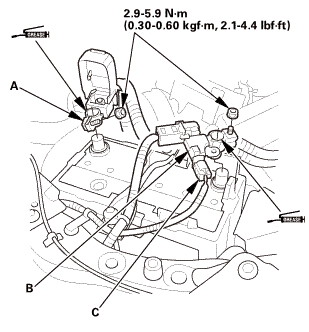
 22mm)2222
22mm)2222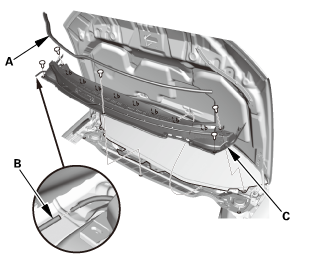
 1.122
1.122

